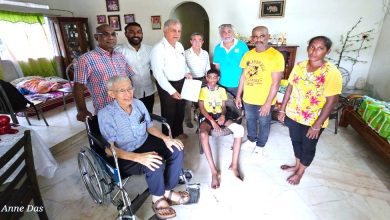The acronym FAST is a good reminder of what you should do if you think someone is having a stroke.
F – is for face. Ask the person to smile and see if their face droops.
A – is for arm. Have the person lift both of their arms to see if one drifts.
S – is for speech. Check if there is slurring.
T – is for time. The sooner the person gets to hospital, the better.


Dr Ang, who is the Consultant Neurologist and Specialist in Internal Medicine at Pantai Hospital, Ipoh was emphatic about recognising the symptoms and paying heed to the time factor.
Once in hospital, a CT scan will determine whether its an
- Ischemic Stroke (Clots) which occurs as a result of an obstruction within a blood vessel supplying blood to the brain.
- Haemorrhagic stroke (Bleeds) which occurs when a weakened blood vessel ruptures.
- TIA (Transient Ischemic Attack) TIA (transient ischemic attack) is caused by a temporary clot which is called a warning or a mini stroke.
Of these 3, Ischemic strokes account for over 87% of all stroke cases. If no contraindications are present anti-clotting medication will begin through intravenous means. Haemorrhagic strokes may require surgery and that is when a Neurosurgeon steps in.
As to the causes of strokes, Dr And says they are multifactorial, including Hypertension or high blood pressure, high cholesterol, diabetes, poor diet, smoking, obesity, artery disease and a lack of physical activity. So watching these factors and taking care with medication is essential in stroke prevention.
Dr Ang also admonishes everyone to take more care of these possible stroke factors after the age of 40. A non-invasive test is the echocardiogram, or “echo”, which is a scan used to look at the heart and nearby blood vessels. It’s a type of ultrasound scan, which means a small probe is used to send out high-frequency sound waves that create echoes when they bounce off different parts of the body. This is a test that is helpful to detect heart disease. Further tests using MRI (Magnetic Resonance Imaging) or MRA (Magnetic Resonance Angiography) which includes the injection of a dye, will further pinpoint actual or potential problems including brain aneurysm which is a bulge or ballooning in a blood vessel in the brain which can leak or rupture, causing bleeding into the brain (haemorrhagic stroke).
Dementia, that curse of senior citizens, may sometimes be caused be a series of small strokes which often go undetected. If early intervention begins, major dementia may be avoided, Dr. Ang added.
Dr Ang who is an Ipoh boy, has been three years in Pantai Hospital, having received his MBBS in India, his MRCP from UK and made a Fellow in Neurology in Malaysia. He spent a year in Australia working on Stroke Management and is currently very keen on spreading the message about speed in Stroke management.
“You can lose 1.9 million neurons for every minute lost in getting to the hospital. That’s how important the time factor is” he stressed.
Dr Ang Chong Lip Consultant Neurologist & Physician MBBS (IND),MRCP (UK) Fellow in Neurology (Mal) Stroke (AUST) Ang Specialist Clinic Neurology & Internal Medicine G-09 Pantai Hospital Ipoh 126 Jalan Tambun, 31400 Ipoh, Perak Tel: +605 540 5555 Direct: +605 540 0384

